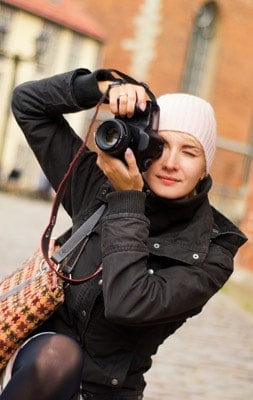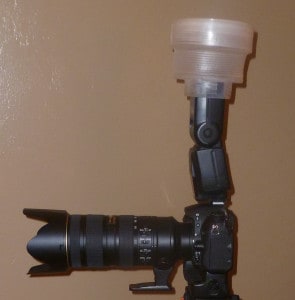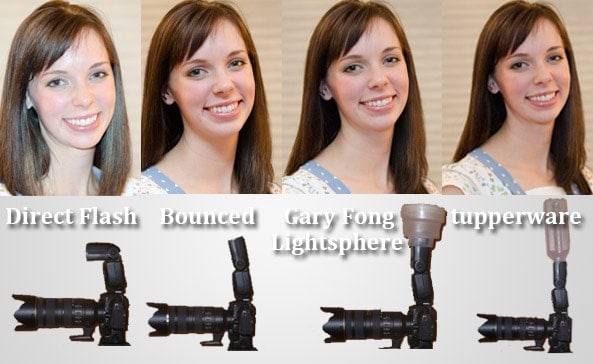
The Basics of On-Camera Flash
The softness of light produced by a flash is controlled by the size of the light source. The larger the light source is, the softer the light. This is why you see photographers shooting a flash through an umbrella. The umbrella spreads out the light and produces a softer quality of light on the model. There are times when umbrellas, softboxes, and the like are too cumbersome. For example, when shooting a wedding reception I generally keep the flash mounted on the camera so I can get some quick shots moving around the event.
However, the light produced by the raw flash pointing directly at the subject is too hard. The light quality is terrible! One solution to this problem is to bounce the light off the ceiling so the ceiling spreads out the light and then reflects down on the person. Unfortunately, this magic technique does not work in every situation. Suppose the wedding reception is outside–where could you bounce the light off now? Or suppose the wedding reception is in a room so large that the ceiling is too far away to bounce the flash off. In these situations, most photographers turn to commercial on-camera flash diffusers such as the Gary Fong Lightsphere or the Adorama Mini Softbox. These miniature flash diffusers slightly enlarge the size of the flash and diffuse the light.
What is the Gary Fong Lightsphere?

The Gary Fong Lightsphere is a collapsible piece of ribbed and frosted rubber that fits snuggly on top of an on-camera flash and diffuses the light of the bare flash so that it falls more evenly and softly on the model. The product does reasonably well for what it is. It does in fact diffuse the light and produces reasonably pleasing light on the model considering that the picture is taken with on-camera flash.
Why in the world are you comparing this product to tupperware?!?!
The Gary Fong Lightsphere costs $50 (at the time of writing). For a hunk of rubber that produces only marginal improvements over the on-camera flash in my opinion, that is just way too much money. The fact is that the darn thing looks like a piece of tupperware to me. So, I got curious. Was this product doing anything that any other hunk of plastic couldn't do? I tested my hypothesis by taking several pictures with a few different pieces of tupperware to see if I had completely wasted my money on this expensive piece of tupperware called the Lightsphere.

So which one produced the better lighting? The tupperware or the Lightsphere?
After my testing, I found that there was absolutely no significant difference in my opinion in the quality of the light produced by the tupperware in comparison to the quality of light produced by the Lightsphere. In short, save your money. I understand that photographers might be tempted to buy the Lightsphere just because it looks more professional than Tupperware, but have you looked at the Lightsphere? It looks like a UFO landed on your flash! If you still aren't convinced about the tupperware, then you might consider a much cheaper option for on-camera flash such as the Opteka Mini Softbox or even a DIY option.

Comments are closed.